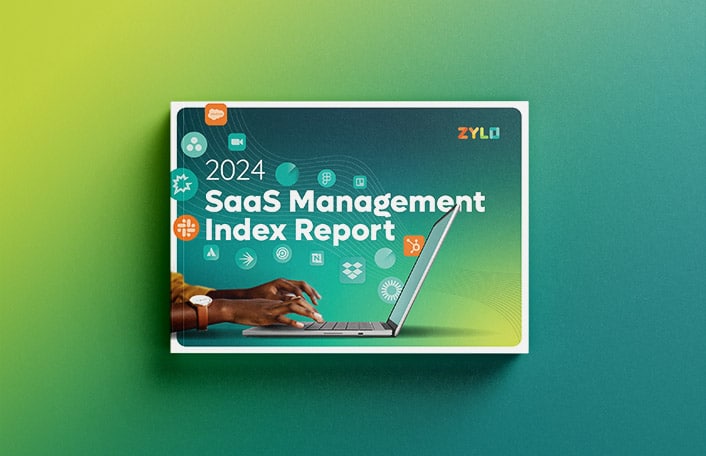
Table of Contents
The old saying “do it once and do it right” may be worth something in a variety of scenarios. However, evaluating and monitoring your SaaS inventory is not one of them. In fact, IT, Software Asset Management, and Procurement leaders must regularly monitor their SaaS apps on at least a monthly, if not a more regular basis. Certainly it’s not a “one and done” mindset.
Large enterprise companies average 660 SaaS applications – sometimes even thousands – across the business. The need to monitor their SaaS apps may be as often as weekly. To do this, it requires ongoing SaaS discovery to ensure there isn’t any oversight of spend, utilization, or security risks – among a variety of other factors.
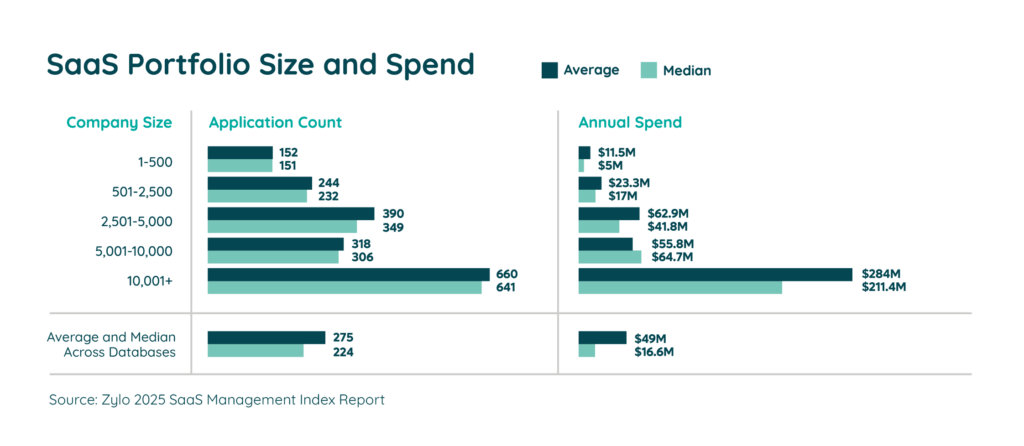
Why should you go through such regular, comprehensive evaluation of your organization’s SaaS applications? Why doesn’t a once-a-quarter audit cut it? What should company executives and leaders look for when evaluating their inventory? What are the risks if they don’t? Let’s explore those questions.
Why It’s Non-Negotiable to Monitor Your SaaS Apps
Since the early 2000s, SaaS has grown exponentially within all companies and now consists of the majority of software spending. In fact, IDC reported that in 2022, for the first time, SaaS spending eclipsed on-premises software spending.
This explosion of subscription software is a result of decentralized purchasing by lines of business and individual employees. It’s a stark contrast to thirty years ago where IT was the sole purchaser of software. Today, IT is responsible for just 26% of software spending and 16% of applications.
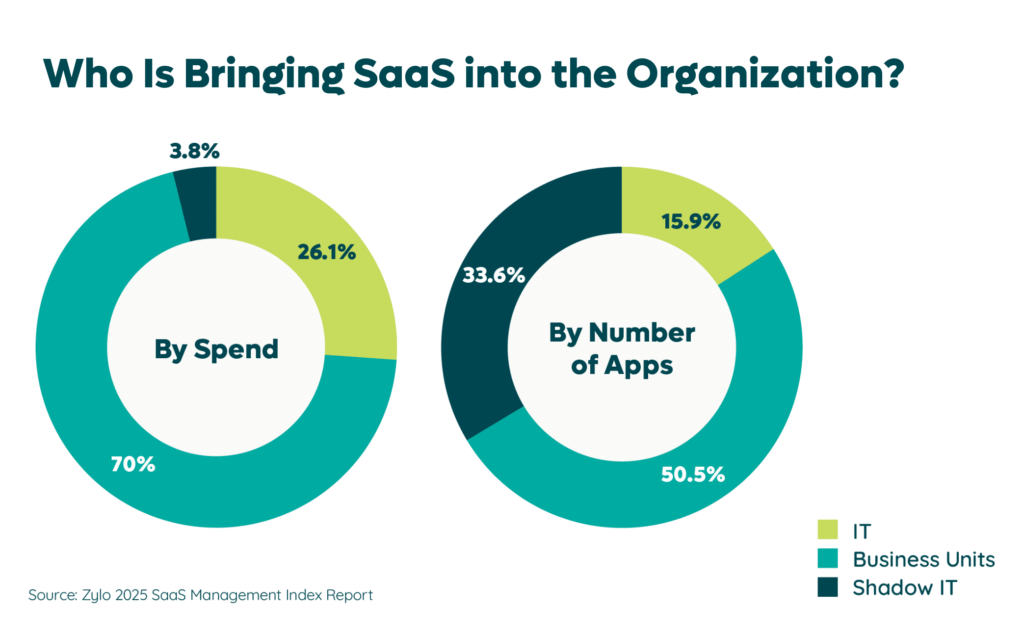
As a result, software enters the business at a steady clip. On average, companies see about 7 new applications entering their environment every month. And for large enterprises, that could be up to 12 applications.
Because the business has taken software purchasing into its own hands, and does so constantly, you must monitor your SaaS apps regularly. What are the consequences if you don’t monitor and audit your SaaS inventory? Organizations that don’t:
- Overspend by missing out on enterprise discounts
- Have overlapping and often unnecessary technologies
- Experience low license utilization
- Increase their security and compliance risks
- Have a difficult time budgeting and forecasting spend
- Miss renewals
Take for instance these staggering data points from the 2024 Gartner® Magic Quadrant™ for SaaS Management Platforms:
- Through 2027, organizations that fail to centrally manage SaaS life cycles will remain five times more susceptible to a cyber incident or data loss due to incomplete visibility into SaaS usage and configuration.
- Through 2027, organizations that fail to attain centralized visibility and coordinate SaaS life cycles will overspend on SaaS by at least 25% due to unused entitlements and unnecessary, overlapping tools.
2024 Gartner® Magic Quadrant™ for SaaS Management Platforms
Learn MoreWhat to Look for When Monitoring & Evaluating SaaS Apps
When monitoring your SaaS apps, there are several factors that should be considered to alleviate the pains mentioned above. What are the questions your organization should be able to answer at any given time? Here are a few you must consider:
- What is the total cost spent on SaaS applications each year as an organization? Across each department?
- How much was budgeted and how much represents shadow IT?
- What is our license utilization across the organization? Across each department?
- Are there duplicate SaaS products that we could roll into a master agreement?
- What application redundancies exist, and where could we standardize?
- How do employees like using each of the SaaS applications? What don’t they like?
- How should we be allocating budget for next quarter, next year and beyond?
5 Risks of Not Regularly Monitoring Your SaaS Apps
Companies that don’t monitor their SaaS apps at all or just once a year could be blind-sided—or completely unaware—of how their organization is purchasing and using technology. Without a proper handle on what SaaS applications are being used and how, it’s nearly impossible to:
- Protect against potential security and compliance risks. Shadow IT and expensed software are risky, and those risks are left unmanaged. Our data shows that 60.8% of expensed apps have “Low” or “Poor” risk scores. Using a SaaS Management Platform (SMP) that notifies you whenever a new application is purchased helps you stay ahead of this.
- Ensure that all critical business systems are connected. When employees don’t have the data they need, it hinders productivity. Seeing the big picture of all your applications enables you to prioritize integrations to remove data silos.
- Manage your software spending. Lack of visibility into costs, budgets, and spending trends makes it difficult to identify unnecessary purchasing and overspending. Regularly monitoring your spending makes it easier to stay on budget, forecast more accurately, and identify opportunities to reduce costs.
 Identify license waste. On average, companies only use 47% of their provisioned licenses, which equates to $21M in wasted spend annually. Tracking license utilization enables you to regularly reclaim unused licenses to avoid purchasing new ones mid-contract. It also helps you determine a more accurate license quantity for your organization’s needs so you can rightsize your contract at renewal.
Identify license waste. On average, companies only use 47% of their provisioned licenses, which equates to $21M in wasted spend annually. Tracking license utilization enables you to regularly reclaim unused licenses to avoid purchasing new ones mid-contract. It also helps you determine a more accurate license quantity for your organization’s needs so you can rightsize your contract at renewal. - Proactively manage renewals. When you don’t keep track of renewal dates, you’re often caught off guard. Using an SMP to monitor upcoming renewals gives you time to prepare and make more informed renewal decisions that ultimately get you the best deal.
IT, SAM, and Procurement teams have a big task ahead of them: to keep up with the changing landscape both externally, and perhaps more challenging, internally. If you fail to keep up with your organization’s SaaS environment, how can you expect to make the right decisions for the business?
Adobe Drives Innovation and Massive Savings with Zylo
In the past 4 years, Adobe has rapidly scaled from $9B to $18B. This growth has made an already complex environment even more complex. Learn how they leveraged Zylo to get complete visibility into their SaaS portfolio, unlock millions in cost savings and avoidance and improve the employee experience.
Use Zylo Discover to Monitor Your SaaS Apps
With the constant barrage of new apps entering your environment and purchases and renewals managed by lines of business, IT, SAM, and Procurement need a new way to manage SaaS and gain complete visibility. And not just quarterly or annual visibility that an ad hoc audit can provide. Without insight into how SaaS applications are being used and performing in real-time, it’s challenging to reduce risk, spend responsibly, and improve operational efficiency.
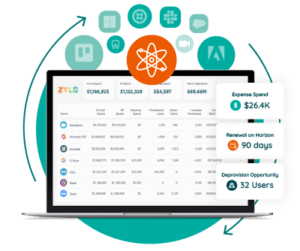 To make better decisions, you must have better data. That’s why we created Zylo Discover, the industry’s first standalone SaaS discovery and inventory solution. By delivering a single source of truth with ongoing discovery and app detection, it enables enterprise IT leaders to:
To make better decisions, you must have better data. That’s why we created Zylo Discover, the industry’s first standalone SaaS discovery and inventory solution. By delivering a single source of truth with ongoing discovery and app detection, it enables enterprise IT leaders to:
- Increase operational efficiency. Build a continuous and definitive system of record of all applications and their owners. Save time and manual effort tracking and managing software in spreadsheets.
- Ensure responsible software spending. Control spend, inform budgeting, and uncover purchasing efficiencies with centralized spend data. Find and cut redundant applications and track savings over time with detailed and actionable reporting.
- Improve security and risk management. Identify all new applications in real time to find and eliminate shadow IT. Pinpoint security risks with ongoing audit control of new purchases.
Let us help you gain complete visibility into your SaaS and conduct regular audits to monitor and improve the health of your software environment. Learn how Zylo Discover works and its powerful use cases for your business. To see it in action, request your personalized demo.


SaaS Inventory Management: The Critical First Step to Managing SaaS
Table of Contents ToggleWhy It’s Non-Negotiable to Monitor Your SaaS AppsWhat...

‘Oh Shit’ Moments that Validate the Need for SaaS Management
Table of Contents ToggleOh Shit! I’m Wasting MoneyOh Shit! We Have...
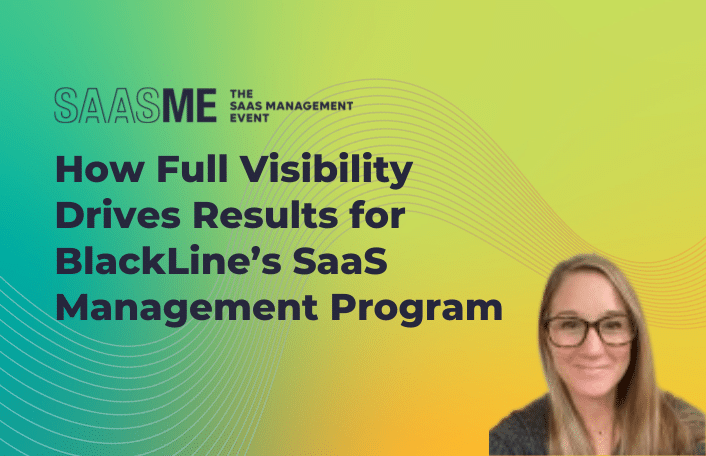
How Full Visibility Drives Results for BlackLine’s SaaS Management Program
Table of Contents ToggleWhy It’s Non-Negotiable to Monitor Your SaaS AppsWhat...


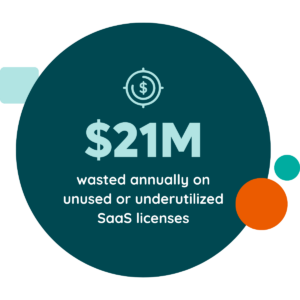 Identify license waste.
Identify license waste.